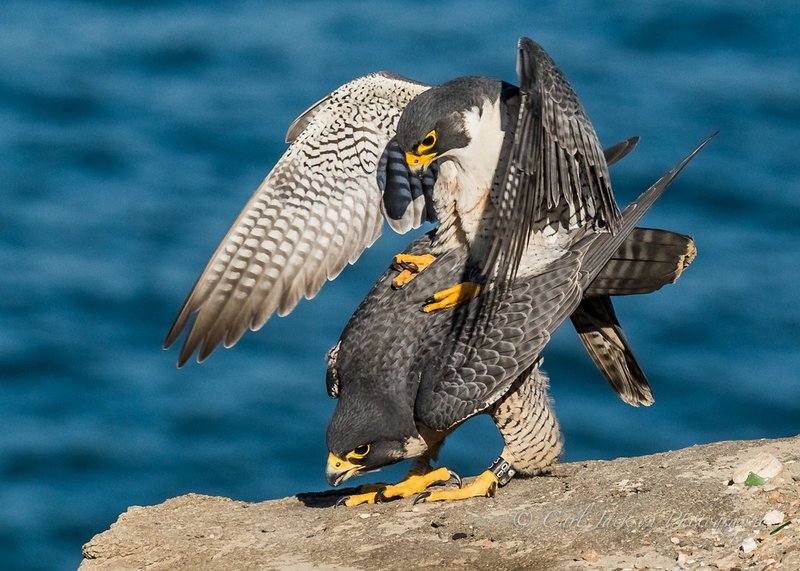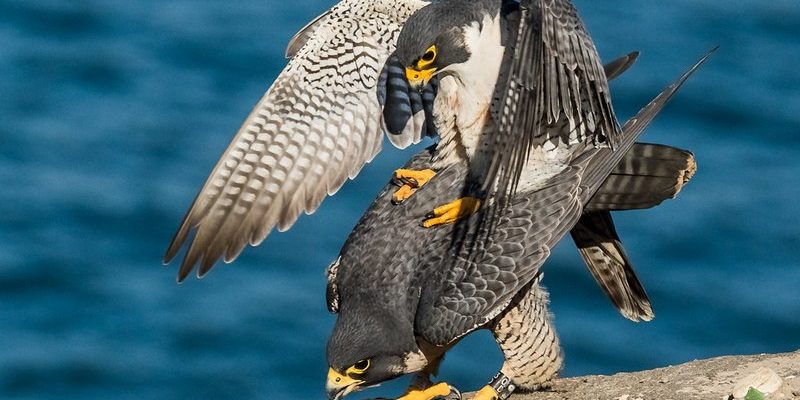
So, what does dating look like for the peregrine falcon? It involves stunning aerial displays, vocalizations, and a strong bond that is nurtured not just during courtship but throughout their partnership. Let’s dive into the world of peregrine falcons and explore their courtship and mating rituals, uncovering how these practices help them thrive in the wild.
Understanding Peregrine Falcon Courtship
To kick things off, courtship for the peregrine falcon is a highly visual and dynamic process. During this time, males engage in various behaviors aimed at impressing females. You might see the male falcon performing impressive aerial maneuvers, such as steep dives, fast ascents, and even flips. This isn’t just for show—it’s a way to display his strength and fitness, qualities that female falcons look for in a mate.
The male often starts by showcasing his prowess in the air, flying high and swiftly to catch the attention of potential partners. This isn’t unlike a dancer showcasing their best moves to grab someone’s eye. The females observe and assess the male’s skills, assessing whether he can provide for them and, by extension, their future chicks.
Vocalizations in Courtship
Vocalizations also play a crucial role during courtship. The male peregrine falcon employs a variety of calls, often described as a series of sharp, high-pitched screeches. This vocal performance is not just about calling out to the females; it’s also a way to establish territory. Here’s the thing: a good territory means access to hunting grounds, which is vital for raising young falcons.
You might be wondering how the female responds. Typically, she’ll show interest through her body language and vocalizations, too, creating a dialogue in the sky. This back-and-forth helps both birds assess their compatibility, ensuring they’re ready for the commitment that comes with breeding.
The Mating Process
Once a pair has solidified their bond through courtship displays, it’s time for mating. The actual mating process may seem brief, often lasting only a few seconds. However, it’s an important moment that strengthens their connection.
During mating, a fascinating behavior known as the “clutch” occurs. The male falcon grips the female’s back with his talons during the act, which may sound a bit rough, but it’s a natural part of their mating ritual. This grips not only provides stability but also reinforces their bond. After mating, pairs usually engage in more soaring and aerial displays, reaffirming their partnership.
Nesting and Pair Bonding
After successful mating, the focus transitions to finding a suitable nesting site. Peregrine falcons often prefer high places like cliffs, tall buildings, or even ledges. These spots provide safety and a vantage point from which they can spot prey.
Once they settle on a location, both partners participate in building the nest. They’ll gather materials like grass, feathers, and other soft substrates. This nesting process is another way to strengthen their bond, as they work together to prepare for their future chicks. It’s a team effort that highlights the commitment each falcon has towards the other.
Parental Roles and Responsibilities
Here’s something interesting: after the eggs are laid, both the male and female peregrines take turns incubating them. Typically, the female does most of the incubating because she’s usually larger and can better protect the eggs. However, the male will still play a crucial role—he’s responsible for hunting and bringing food back to the female while she’s sitting on the nest.
The division of labor is essential for their survival. When you think about it, having two parents share the responsibility of raising their young increases the chance of survival for the chicks. They rely on each other, forging a strong partnership that continues long after the eggs hatch.
Communication Between Partners
Even after the chicks arrive, communication remains vital. The adult falcons use calls and body language to coordinate their efforts, whether it’s about feeding the chicks or defending their territory from potential threats. This ongoing communication is a testament to the strength of their partnership, showing how essential teamwork is in the wild.
Throughout the nesting period, the adults continuously educate their young. They teach them essential skills like hunting and flying, which are crucial for survival. Watching parents bond, communicate, and nurture their chicks is a beautiful reminder of the complexities of nature and the importance of courtship rituals.
Challenges Faced During Courtship
Despite their impressive skills and behaviors, peregrine falcons face various challenges during courtship and mating. One major challenge is the potential for mate competition. Males may find themselves competing not only with one another but also against environmental factors that can influence their mating success.
For instance, habitat loss and changes caused by urban development can affect where falcons can nest and find food. This issue underscores the importance of conservation efforts aimed at protecting these magnificent birds and their habitats.
Another challenge can arise from human interactions. Peregrine falcons are adaptable, but they can be sensitive to disturbances. Nesting sites near human activity, like construction or heavy traffic areas, may lead to stress and unsuccessful mating attempts. As someone who appreciates nature, it’s important to understand these factors and advocate for measures that support the well-being of these amazing falcons.
Importance of Conservation
Conservation efforts are essential to ensuring that peregrine falcons continue to thrive. Programs focusing on habitat restoration, legal protections, and public education about these birds can go a long way. It’s crucial to spread awareness about the challenges they face and promote actions that can help their population rebound.
In fact, conservation success stories highlight how committed efforts can lead to positive outcomes for peregrine falcons. After facing near extinction in the mid-20th century due to pesticide use, these resilient birds made a significant comeback thanks to human intervention.
The Fascination of Peregrine Falcon Courtship
Ultimately, the courtship and mating rituals of the peregrine falcon are a thrilling glimpse into their lives. From dazzling aerial displays to the strength of their partner bonds, there’s so much to admire about these birds. Their rituals remind us that love and commitment have many forms in nature. Just as we navigate our own challenges in relationships, so too do these falcons navigate the skies and the trials of survival.
Birdwatchers and nature enthusiasts alike find joy in observing these rituals, understanding that each display and call represents a part of their incredible journey. Whether you’re perched in a quiet corner of the park or simply enjoying a moment of reflection, remember the magic happening in the skies above and the courtship efforts of the peregrine falcon.
In conclusion, the mating rituals of these remarkable birds are not just about the act of finding a partner; they encompass a whole spectrum of behaviors that speak to their adaptability, resilience, and the delicate balance of nature. By appreciating their courtship and supporting conservation efforts, we can contribute to the ongoing story of the peregrine falcon—keeping their legacy alive for generations to come.

